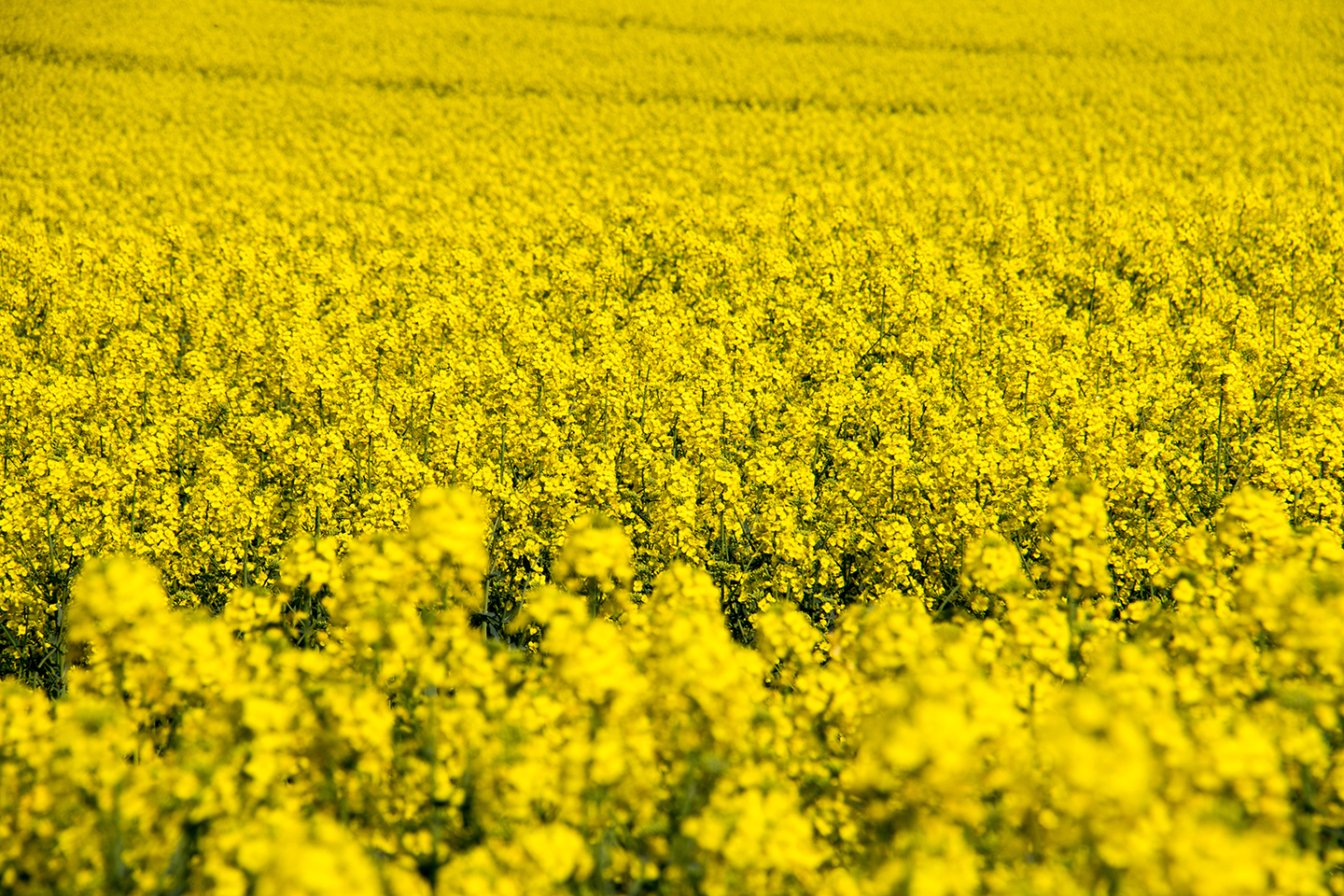Raw materials
Rapeseed oil
Rich in monounsaturated and polyunsaturated fatty acids
Traditional rapeseed oil is good and does you good. Owing to the health benefits of its fatty acids pattern, rapeseed oil is explicitly recommended by the Swiss Society for Nutrition (SGE). Rapeseed oil has few a low content of saturated fatty acids but correspondingly more unsaturated fatty acids, a balanced proportion of omega-6-fatty acids (linoleic acid) and many omega-3-fatty acids (alpha- linoleic acid). Rapeseed oil is also rich in vitamin E (21-25 mg/100ml). This vitamin also helps protect our cells from oxidative stress.
The SGE recommends consuming two to three tablespoonfuls (20 to 30 g) of vegetable oil daily, at least half of which should be rapeseed oil. Two tablespoonfuls containing 10 g each of rapeseed oil meet our daily need for omega-3-fatty acids and around 30-40% of our vitamin E requirement. Rapeseed (Brassica napus) was created by crossing cabbage (Brassica oleracea) and turnip (Brassica campestris) and therefore belongs to the brassicaceae family like cabbage, turnip rape or mustard. Rapeseed does not exist in nature; it has been created by humans. It originateds in the Eastern Mediterranean area and was spread throughout Europe by the Romans. Rapeseed was already being grown hundreds of years ago because of the high oil content of its seeds. The bright yellow oil is widely used in salads and for pan frying and is as well as being used as an ingredient in margarine, mayonnaise and other dressings.HOLL means High Oleic – Low Linolenic
A further important triumph in breeding was achieved in 2003 with GMO-free HOLL rapeseed varieties. HOLL rapeseed oil contains more oleic acid and less linolenic acid. HOLL in fact stands for High Oleic Low Linolenic. HOLL rapeseed oil helps lower trans-fatty acids in the diet because it retains its properties at high temperatures. This new variety can thus also be used for deep frying, whereas until now rapeseed oil could not be used for deep frying.
More info required?www.raps.ch

Sunflower oil
The raw material are sunflower seeds
The raw materials for sunflower oil are sunflower seeds. The seeds are pressed to obtain this clear oil. Sunflower oil is rich in polyunsaturated linoleic acid and is used in hot and cold dishes, in salads, mayonnaise and dressings, and is Switzerland’s most popular cooking oil.
A new variety is born High-oleic (HO) sunflowers have been specially bred in order to create a vegetable oil that is ideal for deep frying. HO sunflowers were bred naturally, i.e. by selecting suitable plants and propagating them. In the fields, HO sunflowers look just the same as traditional sunflowers. HO sunflowers have gained a new fatty-acid pattern that enables the oil to be heated to high temperatures.


